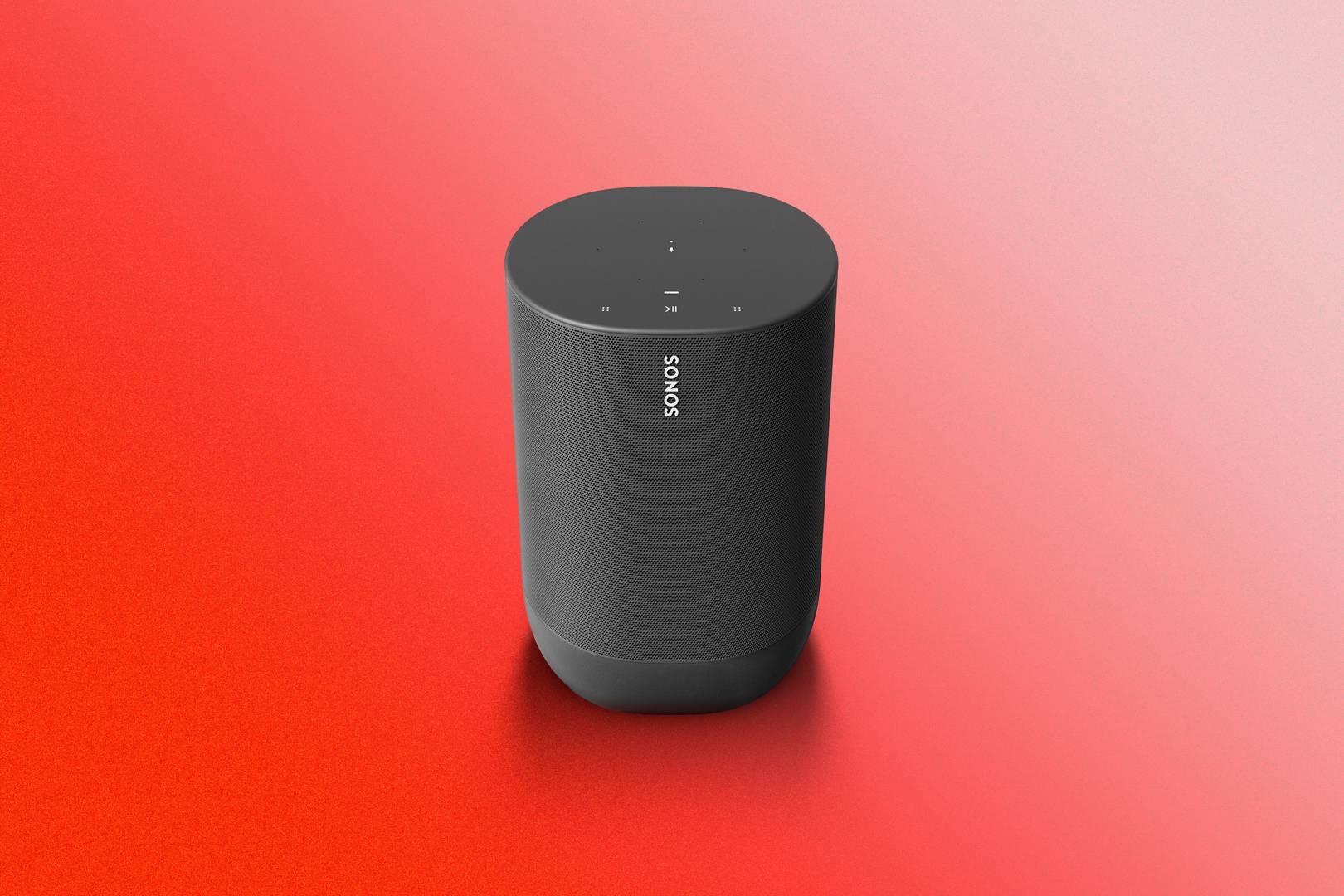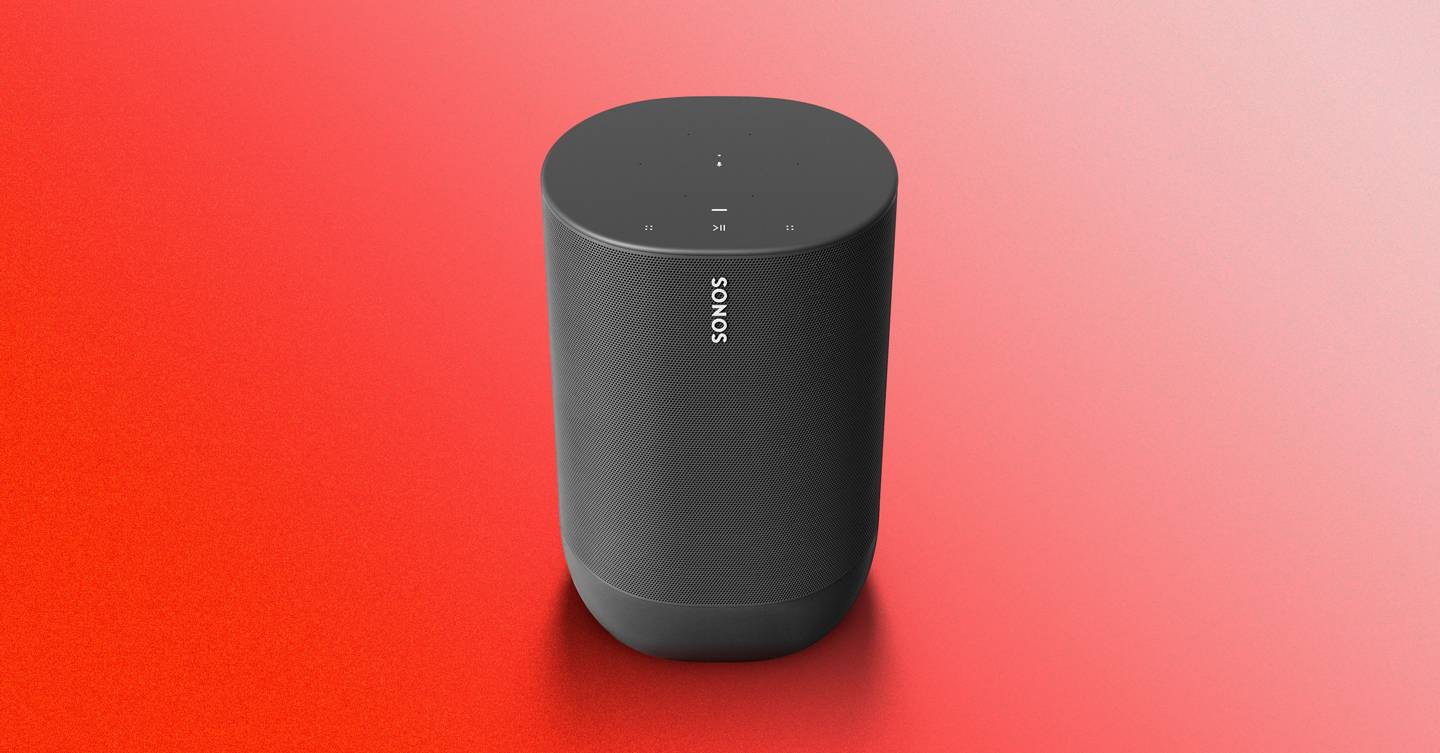

9 / 10
Some companies have a knack of announcing their new products as if they’re incredible technological breakthroughs the likes of which have never been seen before. It doesn’t matter if other firms have been utilising the technology for years – they’re presented as incredible feats of unheard-of engineering. Apple, in particular, springs to mind here, but others are equally guilty. Take an Apple launch at face value and you’d be forgiven for thinking it had single-handedly invented everything from OLED screens to electricity.
There’s a suggestion of this stance about the new Sonos Move. Sonos was into the whole wireless multi-room audio thing good and early, and it’s maintained both profile and market share thanks to an ever-expanding range of good-quality, good-value speakers. ‘Sonos’ is well on its way to become a generic term like ‘Hoover’ or ‘Sellotape’.
Yet despite everyone identifying a portable, battery-powered speaker as the obvious next addition to the formidable Sonos range for, oh, the last decade or so, the company has assiduously avoided it. Until now.
Here’s the Sonos Move. At long last, Sonos has invented the battery-powered, weather-proof, voice-controlled, go-anywhere speaker – and it’s invented Bluetooth for good measure. Not before time.
Design
The Sonos design template has been established for a good while now, and the Move fits right in. It’s reasonably tall (24 x 16 x 12.5cm, h x w x d), vaguely cylindrical and impeccably built from what feels like very high-quality materials. The bottom portion is sturdily rubberised for durability in the great outdoors (or the back garden, most likely) and the top plate features brief touch-controls and mics for voice operation.
In-between, the Move is mostly a rigid acoustic grille. Sonos reckons this 3kg cabinet (currently only available in ‘shadow’ black) is hard-wearing and shock-resistant – it certainly feels the former although the verifying the latter claim would depend on your definition of how much rough-and-tumble you can expect a wireless speaker to endure.
At the rear of the cabinet there’s a nicely integrated grab-handle, below which sit a ‘power on/off’ button, a control to switch between wi-fi and Bluetooth inputs, and a ‘set up/reset’ button. There’s also a USB-C slot for charging, in case you’re far from the Move’s charging ring.
Features
Oh yes, the charging ring. The Move is supplied with a large plastic mains-powered ring, in which it sits to charge the internal battery – it’s suggestive of the charging dock for an absolutely massive electric toothbrush. Sonos is claiming ten hours from a single charge, which seems achievable, and a total of 900 or so charges before the battery needs replacing.
The Sonos has an IP56 rating, which means it’s able to resist heat, cold, humidity, dust, rain, salt spray and all the other stuff you’re certain to encounter in a European garden. And the finish is designed to resist marking from (says Sonos) all sorts of substances, from mustard to bug-spray. We’re inclined to take the company at its word rather than smear our lunch on the speaker.
Naturally, the Move integrates seamlessly into your wider Sonos system. It couldn’t be simpler to introduce it into your multi-room set-up, in fact, or set up a couple of Moves as a stereo pair – thanks in large part to Sonos’s absolutely exemplary control app. And thanks to its four integrated Wi-Fi antennae, it has the best Wi-Fi range of any speaker in the Sonos range. Certainly you shouldn’t have to switch from Wi-Fi to Bluetooth if you’re only taking the Move into the garden.
Just as well, really, as Bluetooth connectivity is of the rather retrograde 4.2 variety. It’s true that not every rival company offers aptX HD or even Bluetooth 5, but those that do have a theoretical advantage in terms of audio quality and a definite advantage in terms of battery life. And £400 is not a trifling sum to be dropping on a portable speaker, so it’s a shame it doesn’t buy up-to-the-minute Bluetooth specification here.
The control app allows you to incorporate any or all of the major music streaming services, and to specify Amazon Alexa or Google Assistant voice control, as well as access the music stored on the device you’re using. The app includes TuneIn radio, and the Move can also be controlled via Apple AirPlay 2.
Once the digital music is on board, it’s decoded by a 16bit/44.1kHz DAC and treated to an undisclosed amount of Class D power from a pair of amplifiers. One amp drives a downward-firing tweeter above a wave-dispersion device, the other powers a forward-facing mid-bass driver.
The Move also features a nice refinement of Sonos’s Trueplay facility, which uses your smartphone’s mics to calibrate your static Sonos speakers to best suit their position. The Move’s Auto Trueplay intends to recalibrate the Move each time it’s moved to a different position – it uses a combination of data from both customer calibrations and its own extensive mapping of numerous domestic outdoor spaces to help the speaker sound its best in any circumstances.
Performance
No one ever carried a wireless speaker out into the garden in order to listen to some downbeat indie introspection, so we start with a Tidal-derived file of Four Tet’s “SW9 9SL”.
This is a punchy, driving and turbulent piece of electronica, with plenty happening at either end of the scale. But throughout the frequency range, from the rattle and hiss of the top-end to the fast-moving complexity of the bass line, the Move keeps on top of things in impressive style. It delves deep and punches hard, but controls the bass sufficiently that the start and stop of individual notes is obvious even as they threaten to pile up on top of each other.
It also attacks crisply at the top end – it’s perhaps not the most substantial-sounding wireless speaker you ever heard where treble sounds are concerned but, again, it’s controlled and it times well.
That slightly splashy treble characteristic is again in evidence during The Detroit Emeralds’ “Baby Let Me Take You (In My Arms)”, but what’s far more noticeable is the Move’s adept handling of the midrange. It’s packed full of detail, with all the nuances that go towards giving a singer real character easily revealed – the word ‘communicative’ might seem redundant when discussing words being sung, but in this instance it’s valid. The Sonos Move enjoys as communicative a midrange as any nominal rival, and that’s a big part of what makes it such an enjoyable listen.
Of course, portable speakers have to have a bit more about them than well-realised frequency response and an eloquent way with a vocalist. They need to be loud – not only because ‘portable speaker’ = ‘party time’ in every advertising exec’s imagination, but because the great outdoors offers none of the physical boundaries that help speakers sound big and bold. And even though Sonos, true to form, is coy about the amount of power the Move is packing, it’s safe to say it’s an adequately loud loudspeaker. Push the volume all the way up and your neighbours will be in no doubt as to what you’re listening to, even when the Move is surrounded by nothing but wide open space.
In pretty much every other aspect of music reproduction, too, the Sonos Move varies between ‘very good’ and ‘very good indeed’. It handles the gimpy white-boy rhythm of Wire’s “Three Girl Rhumba” without obvious effort, and deals with the low-level harmonic dynamics of the same band’s “Strange” with equal efficiency. It steams through the broad dynamic shifts of Kamasi Washington’s gallop through “Clair de Lune” with similar alacrity, and it generates a respectably wide, well-defined soundstage while it’s at it.
Tonally the Move is commendably neutral, with only that mildly problematic treble response sounding an even remotely false note – and a lot of this is down to how effective Auto Trueplay is. Once the Move’s accelerometers have detected it’s been moved, it takes less than a minute for the speaker to assess its new surroundings and trim its audio response accordingly. It’s useful and effective – and if you don’t like the balance the Move has decided it ought to favour, there’s manual EQ adjustment in the Sonos app.
Of course, moving the Move a significant distance means you’ll need to switch from Wi-Fi to Bluetooth connectivity. All it takes is a press of the switch at the back of the speaker – the tell-tale LED on top of the speaker switches from white to blue, and you’re ready to connect. The Bluetooth connection proves robust, with a stable signal available even from smartphones a) a fair distance away and b) in a pocket or a bag.
Taken on an individual basis, the compromises inherent in the switch from Wi-Fi to Bluetooth 4.2 connectivity are small – there’s a little less positivity in the bass, a little less subtlety to the midrange performance, and the definition of the soundstage takes a minor hit, too. But cumulatively, the Bluetooth performance is an unarguable step down in quality compared to the Wi-Fi alternative. So we’d avoid it unless, well, it’s unavoidable.
Those who were expecting the Move to simply be a battery-powered Sonos Play:5 with Bluetooth connectivity should have known Sonos would be a fair bit more ambitious than that. Sonos Move enjoys a similar tonal balance as the Play:5, but the need for it to sound impressive whilst outdoors means it’s an even burlier and more assertive listen.
It’s been an indecently long time coming, but Sonos’s foray into the world of battery-powered, portable Bluetooth speakers enhances its model range, and its overall reputation, no end. We can’t wait for the day it invents hi-res audio and aptX HD Bluetooth.
More great stories from WIRED
💩 Japanese self-cleaning toilets are conquering the West
📱 The new Android 10 features that will transform your phone
📖 The best sci-fi books everyone should read
🍫 The foods you’ll really need to stockpile for no-deal Brexit
♻️ The truth behind the UK’s biggest recycling myths
read more at https://www.wired.co.uk/ by Simon Lucas
Tech








